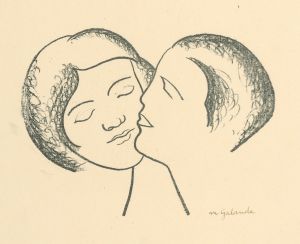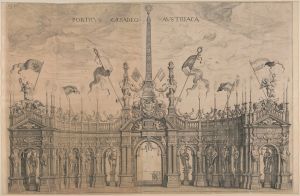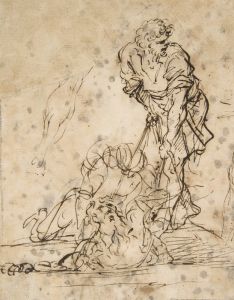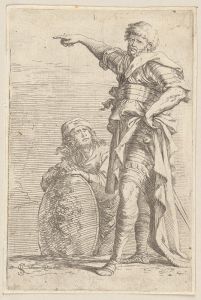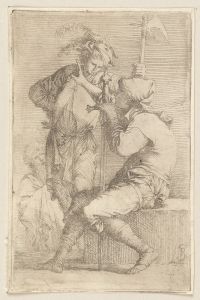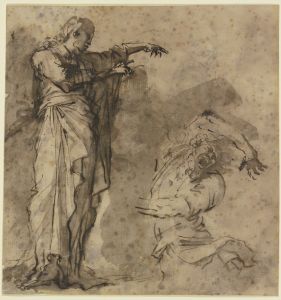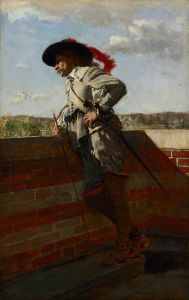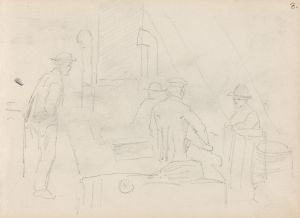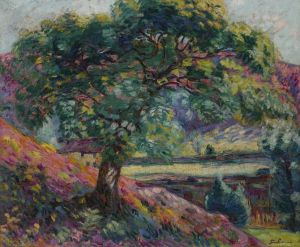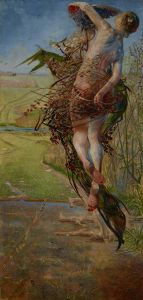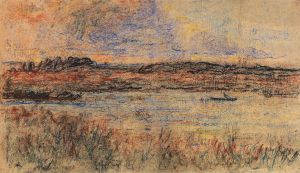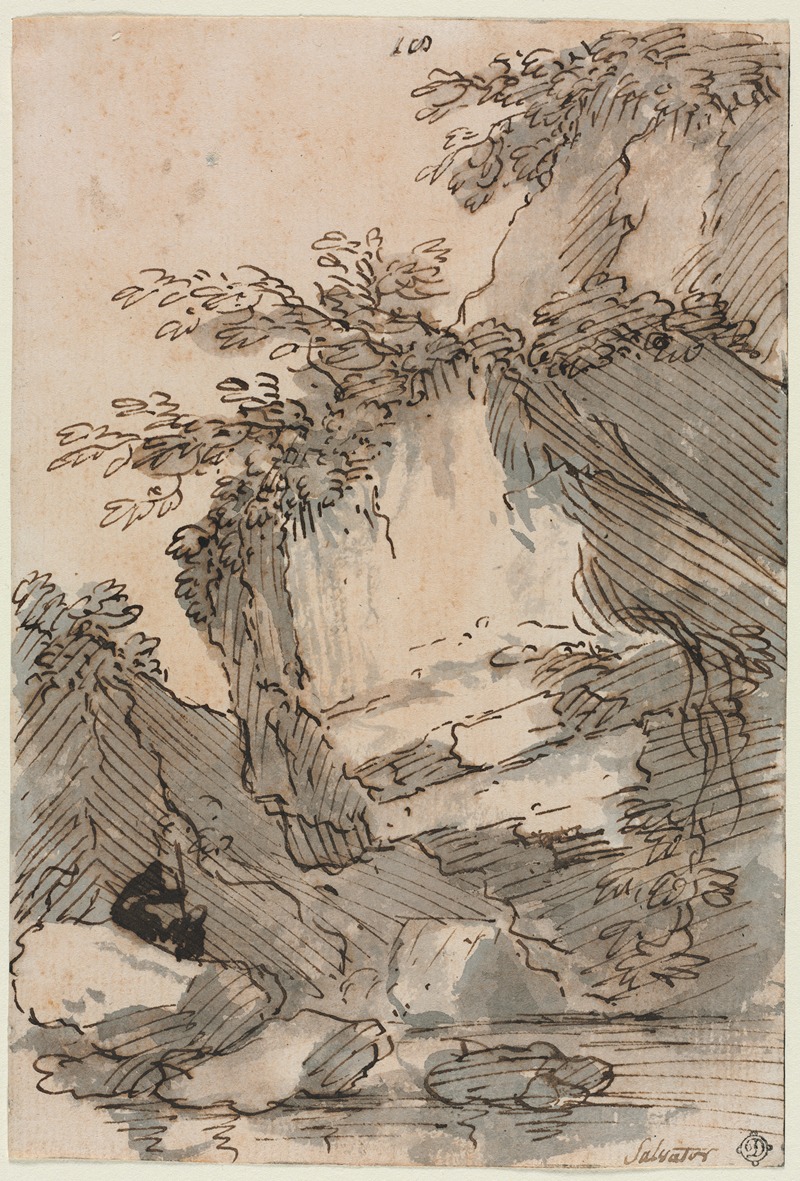
Figures by a Rocky Pool 1660-1673
A hand-painted replica of Salvator Rosa’s masterpiece Figures by a Rocky Pool 1660-1673, meticulously crafted by professional artists to capture the true essence of the original. Each piece is created with museum-quality canvas and rare mineral pigments, carefully painted by experienced artists with delicate brushstrokes and rich, layered colors to perfectly recreate the texture of the original artwork. Unlike machine-printed reproductions, this hand-painted version brings the painting to life, infused with the artist’s emotions and skill in every stroke. Whether for personal collection or home decoration, it instantly elevates the artistic atmosphere of any space.
Salvator Rosa's painting "Figures by a Rocky Pool," created between 1660 and 1673, is a notable example of the Italian Baroque artist's work. Salvator Rosa (1615–1673) was an influential painter, poet, and printmaker known for his unorthodox style and rebellious spirit. Born in Naples, Rosa was a versatile artist whose work spanned various genres, including landscapes, portraits, and historical scenes. He was also known for his satirical writings and was part of the intellectual circles of his time.
"Figures by a Rocky Pool" exemplifies Rosa's distinctive approach to landscape painting, characterized by dramatic and often wild natural settings. The painting depicts a group of figures situated near a rocky pool, surrounded by a rugged and untamed landscape. Rosa's landscapes often convey a sense of mystery and drama, and this work is no exception. The rocky terrain and the pool create a dynamic composition that draws the viewer's eye across the canvas.
Rosa's use of light and shadow in "Figures by a Rocky Pool" is particularly noteworthy. The interplay of light and dark areas enhances the dramatic effect of the scene, a technique commonly employed in Baroque art to evoke emotion and tension. The figures in the painting, though secondary to the landscape, are carefully integrated into the scene, contributing to the overall narrative and mood. Rosa often included figures in his landscapes to add a human element and to suggest stories or allegories, though the specific narrative in this painting remains open to interpretation.
The painting reflects Rosa's interest in the sublime and the picturesque, themes that were gaining popularity during the 17th century. His landscapes often depict nature as powerful and awe-inspiring, a departure from the more orderly and harmonious landscapes of earlier artists. This approach aligns with the Baroque fascination with the dramatic and the emotional, as well as the period's exploration of humanity's relationship with nature.
Rosa's work was influential in his time and continues to be appreciated for its boldness and originality. He was a precursor to the Romantic movement, with his emphasis on the wildness of nature and the emotional impact of his compositions. "Figures by a Rocky Pool" is a testament to his skill in capturing the essence of the natural world and the human experience within it.
The painting is part of Rosa's later works, created during a period when he was increasingly focused on landscape painting. This phase of his career was marked by a deepening of his exploration of nature's untamed beauty and the incorporation of philosophical themes. Rosa's landscapes from this period are celebrated for their innovative compositions and their ability to evoke a sense of wonder and contemplation.
"Figures by a Rocky Pool" is housed in a collection that appreciates Rosa's contribution to Baroque art and his unique vision. His works are studied for their technical mastery and their ability to convey complex emotions and ideas through the depiction of nature and human figures. Rosa's legacy as a painter is marked by his ability to challenge conventions and to inspire future generations of artists with his daring and imaginative approach to art.





